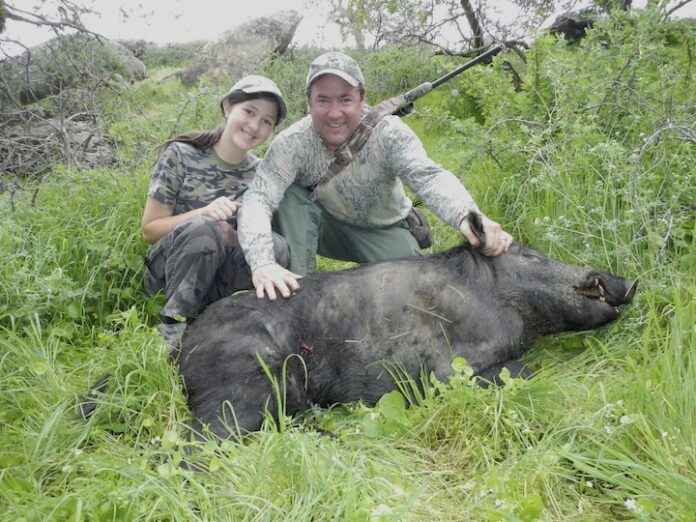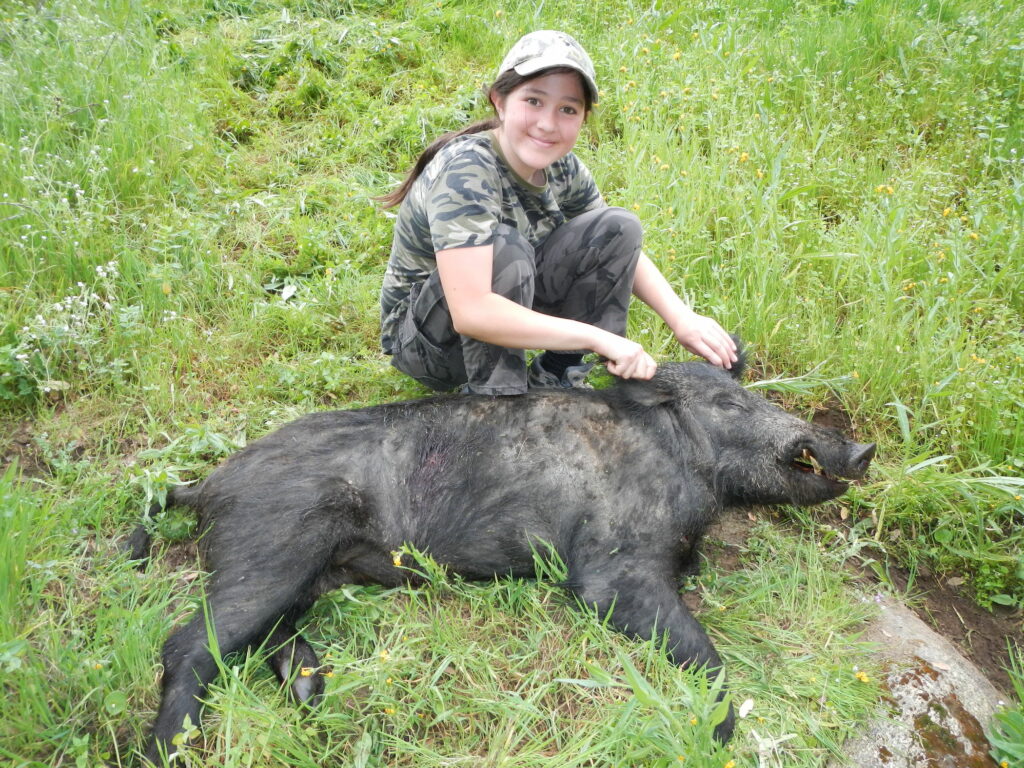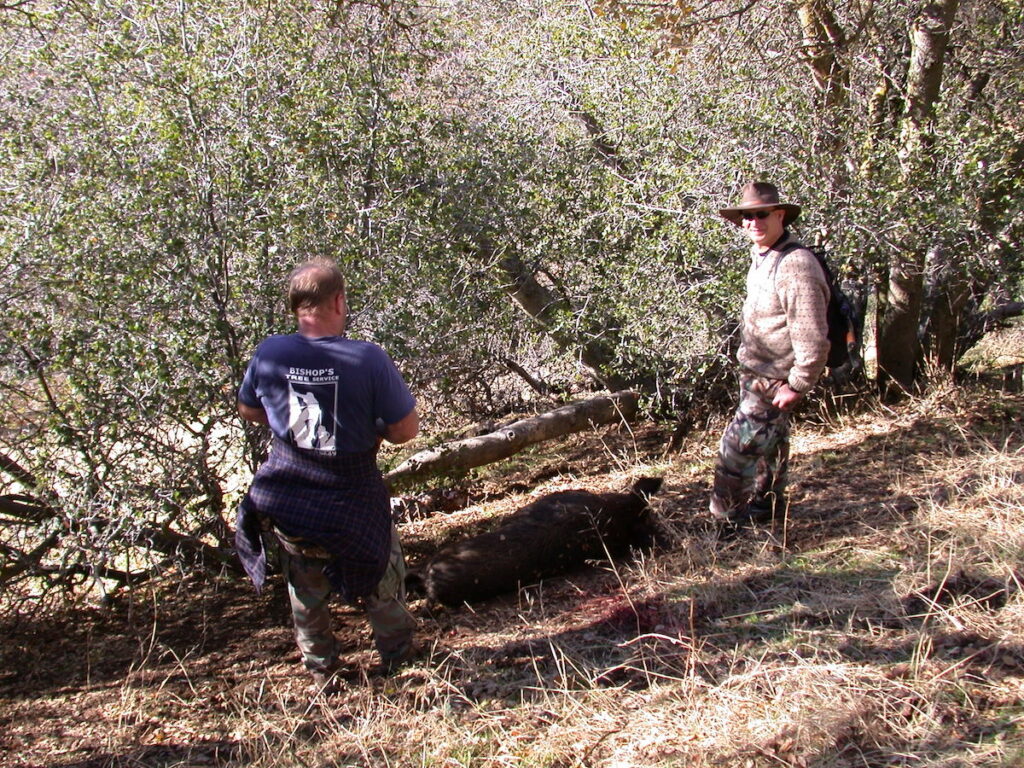
BY TIM E. HOVEY
Probably one of the most important skills a hunter can possess is the ability to follow the blood trail of a wounded animal. Unfortunately, most hunters may not know or understand the subtleties of accurately reading a blood trail. And when it comes to recovery of that animal, learning what to do while trailing blood can be the difference between a successful hunt and failure.
If you’ve hunted long enough, you understand that many animals, especially big game animals, don’t just tip over after the shot. Most of the time they take off once hit, often out of sight. In my opinion, what the hunter does immediately after the shot is very important in the recovery of the animal.
First and foremost, the hunter needs to own the shot, no matter how good or bad it was. If the hunter felt good about the bullet placement, he should say so. He should also confer with other hunters that witnessed the shot. They need to be honest in their assessment of the shot placement and they need to voice their opinion. A hit in anything other than the vitals should be considered a poor shot, and the group should seriously discuss on what to do next as far as recovery.
I was on an elk hunt years ago when I witnessed a very poor shot on a young bull at 250-yards. Despite having a steady rest and shooting prone, the hunter hit the animal too far back and completely missed the lungs and anything vital that would’ve killed the elk quickly.
The hunter, who I did not know personally, was all set to head out after the animal to pick up the trail. I spoke up and told him his shot was poor and that he needs to pick up the trail the following day. I continued to explain that trailing him immediately would result in pushing the animal and recovery would be in doubt. Luckily, he listened, and they found the elk 300-yards from where he shot him, bedded down and dead the following day.
If the hunter feels good about the shot and gets a general confirmation from his group, they need to pick up the blood trail quickly. At the site of the impact, you should look for any sign of blood, flesh or hair, indicating that the animal was hit. A second assessment of your next step should also occur here.
If blood is encountered, a hunter should carefully examine the blood color and pattern. Arterial blood will leave the animal’s body under pressure, spraying vegetation as the animal flees. Bright red blood usually means lung blood, a sure sign of a lethal hit. Darker blood or contents of the stomach means the impact was further back on the animal than optimal, hitting the liver or gut.

Finding dark blood of gut material means your day is essentially done. Without question, hunters need to back out of the area and come back another time, giving the animal time to expire without harassment. If you continue to track poor sign, you will push the animal jeopardizing recovery.
Finding lung blood or a good quantity of blood, the hunter should slowly take up the trail and look for the animal. During the actual blood trailing, care should be taken not to step on the blood spore to avoid tracking it during the process.
When I start tracking an animal, I’ve gotten into the habit of talking out loud about what I see. I’ll slowly walk next to the blood sign, essentially calling out ‘blood here’ as I go. I make note of the quantity of the blood, whether it’s increasing or decreasing. If I find an area where the blood is pooled, indicating the animal stopped or bedded there for a bit, I’ll reconsider continuing. Pooled blood means an animal is slowing down and needs to be left alone until it expires.
Sometimes you’ll see two parallel blood trails, indicating that the animal is leaking out of both sides. This tells you that the hunter’s bullet went through the animal, causing hemorrhaging from each side of the animal.
At times, the blood trail will just stop. Animals usually don’t keep running until they’re completely drained of blood. Large mammals can expire after loosing just 30% of their blood volume. Depending on the length of the blood trail and bullet placement, the wound may start to close up and the blood start to coagulate, lessening the amount of spilled blood. If the trail ends, mark where you last spotted blood sign and back out.
Ideally, after a short tracking job, you should find your animal at the end of the blood trail. Animal recovery should be just as important to any hunter as time at the range and getting in shape for the hunt.
With today’s high-velocity bullets, hunters can lethally hit large mammals if they shoot straight and place the bullet correctly. Bad or poor hits will always happen, but a hunter can lessen the probability of a lost animal by practicing their shooting and staying within your distance limits on the hunt.
Years ago, I was pig hunting with my daughter when we encountered a wild boar slowly feeding away from us and oblivious to our presence. After some scrambling, I got Jessica into position to take a 180-yard shot. She steadied herself and hit the boar perfectly. The pig spun twice and then headed off over the hill.

We got on the blood trail immediately. We found bright red blood at the impact site and followed that for 100-yards. The trail then became two trails, indicating a through and through hit. While the blood was easy to track, pigs are tough animals, and I wasn’t going to feel relieved until we found the pig.
Approximately 350-yards from the impact site, the blood trail abruptly stopped on a steep game path. A bit dejected, we marked the spot, and I was just about to start a concentric search for more blood, when my daughter spotted the dead pig a dozen yards below the trail. He had died on the steep path and slid down the hill. Even with a perfect hit, that boar traveled 350-yards before expiring.
During my hunting career, I’ve had to blood trail deer, wild pig, coyote and bobcat. Unfortunately, not all of those episodes resulted in a recovered animal. Even well hit animals, can be lost in some terrain or thick habitat. The best we can do is make a good shot, and when the time comes, learn what the blood is telling us.



